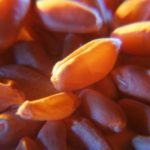I started my career in Manitoba’s agriculture industry with the provincial government in February 2001. There I was introduced to the five-year funding structure used by Canada’s federal, provincial and territorial governments to support the Canadian agriculture industry. Early in my career, it was called the Agricultural Policy Framework. This was followed by Growing Forward,

Comment: ‘New deal’ does not mean good deal for Canadian agriculture
Research funding has changed a lot in the last 20 years, and not necessarily for the better

Fresh off the field
With winter cereal seeding season upon us, here’s the 2016 MCVET winter cereal yield data
In Manitoba, interest in fall rye is increasing, with 112,000 acres seeded the fall of 2015. Although winter wheat acres have declined in recent years, there are still very strong economic and agronomic arguments to be made for including winter wheat in rotation. There are a number of newer winter wheat and fall rye varieties,

2015 MCVET winter wheat, fall rye data released
Farmers can use this data to make head-to-head comparisons of varietal performance at specific sites
Since 2008, MCVET (Manitoba Crop Variety Evaluation Team) has been publishing winter cereal data collected from its trials shortly after harvest to help farmers and seed growers in Manitoba make variety decisions. In 2015, data is being released for five locations — Boissevain, Carman, Melita, Roblin and Winnipeg — for winter wheat and fall rye.
Winter wheat performance data in 2013 is R-rated!
Twenty years later in the making: improved genetic resistance to fusarium head blight in winter wheat
It has been 20 years since Manitoba experienced the most severe epidemic of fusarium head blight (FHB) on record. Since that time, significant progress has been made to mitigate the impact of FHB. In the past, winter wheat tended to ‘escape’ FHB infection as it flowered prior to environmental conditions that favoured infection. However, asManitoba winter wheat performance data for 2012
Farmers select winter wheat varieties based on yield potential, disease resistance, height, standability and maturity. But what is becoming increasingly important is selecting varieties on planned end-use or marketing considerations. Is the harvested product for milling? For ethanol production? As an ingredient in feed rations? Knowing the answers to these questions will help farmers
Is it tan spot or physiological leaf spot in your winter wheat?
What might look like tan spot or septoria on winter wheat could be physiological leaf spot and it’s important to know the difference.If it’s physiological leaf spot there’s no point spending money on a fungicide because it won’t cure the problem, which usually has little impact on yield anyway.Suspected cases of physiological leaf spot have
Winter wheat can germinate in spring
There are reports circulating of agronomists telling producers to reseed winter wheat fields that have just germinated this spring. As I understand, it is related to the process of vernalization and whether it has occurred or not. Last fall I wrote a Crops eNews article titled “What Happens if My Winter Wheat Didn’t Emerge?” –
Winter Wheat Variety Selection Important As 2013 Approaches
Winter wheat variety evaluation will become increasingly important as 2013 approaches. Many Manitoba farmers will be affected by Canadian Grain Commission plans to move CDC Kestrel, CDC Clair, CDC Harrier, CDC Raptor and CDC Falcon from the Canada Western Red Winter (CWRW) class to the Canada Western General Purpose (CWGP) class as of August 1,
Manitoba releases 2011 winter wheat variety data
Winter wheat variety evaluation will become increasingly important as 2013 approaches. Many Manitoba farmers will be affected by Canadian Grain Commission plans to move CDC Kestrel, CDC Clair, CDC Harrier, CDC Raptor and CDC Falcon from the Canada Western Red Winter (CWRW) class to the Canada Western General Purpose (CWGP) class as of August 1,
The Trouble With Broadcast Seeding
With minimal acres seeded the first week of May 2011, the later-than-normal seeding is the talk of the coffee shop. But it’s too soon to panic. Data from the Manitoba Agricultural Services Corporation shows that from 2005 to 2010 more than 1.2 million acres of spring wheat and canola on average are seeded in the

